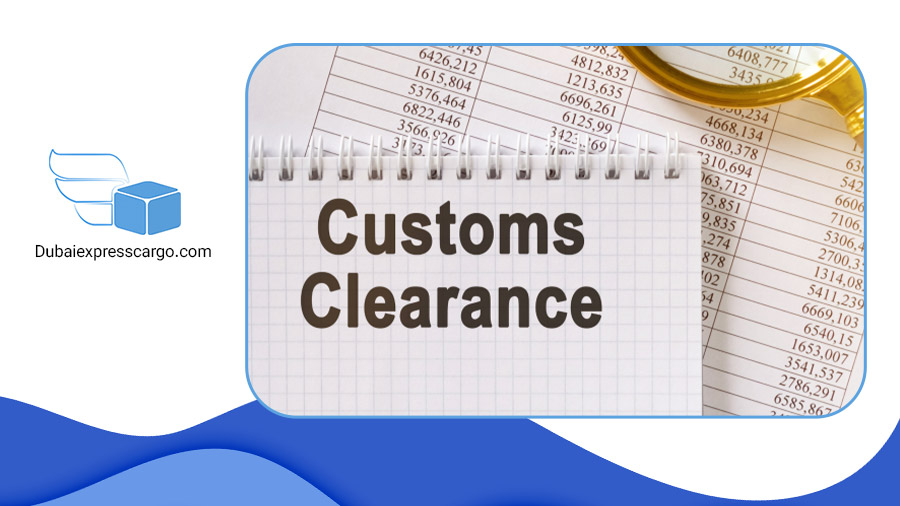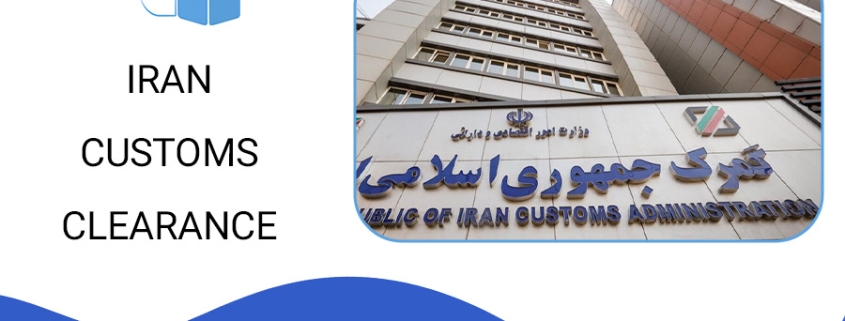Iran’s Customs Clearance: A Simplified Guide
Importing or exporting goods to or from Iran requires a thorough understanding of the customs clearance process. This guide provides a concise overview of the key aspects involved in this process.
Contents
Pre-Arrival Procedures of Customs Clearance in Iran
Before importing or exporting goods to or from Iran, you must register with the Islamic Republic of Iran Customs Administration (IRICA). Once registered, you will be issued an Importer-Exporter Code (IEC), a unique identifier for your business.
1. Register with IRICA and Obtain an IEC
To register with IRICA and obtain an IEC, you will need to submit the following documents:
- A completed application form
- A copy of your business registration certificate
- A copy of your passport or other valid identification document
- A copy of your company’s bank statement
- A fee of IRR 500,000
2. Classify Your Goods and Determine Tariff Codes
Imported and exported goods must be classified using the Harmonized System (HS). This code determines import duties and taxes for your items.
Classify your goods using the HS code list. The HS code list includes all international commerce commodities. Each good has a unique code based on its qualities.
After classifying your goods, determine import duties and taxes. Check the IRICA tariff schedule. The IRICA tariff schedule contains all Iranian imports, exports, and import tariffs and levies.
3. Prepare Required Documentation
Gather documentation before your products arrive in Iran to guarantee seamless customs clearance. These documents outline your shipment and verify its validity and Iranian compliance.
- Bill of Lading (BL): Bills of lading are legally binding documents issued by carriers to acknowledge receipt of goods for transportation. It proves the shipper-carrier contract and specifies transportation terms.
- Commercial Invoice: The commercial invoice is a detailed transaction breakdown between the buyer and seller. It comprehensively describes the goods, including their quantity, price, and total value. This document is essential for customs valuation and determining applicable duties and taxes.
- Packing List: Shipping products are mentioned in the packing list. It lists item quantities, descriptions, and packaging details like boxes, crates, and pallets. This document helps customs check shipment contents and manage inventory.
- Certificate of Origin: The certificate of origin is an official document certifying the country of origin of the goods. It is issued by a recognized authority, such as a chamber of commerce or government agency, and verifies that the goods were manufactured or produced in the specified country.
- Insurance Certificate (if applicable): An insurance certificate is recommended for shipments with high value or those susceptible to damage or loss. It documents insurance coverage for the goods during transit, protecting the shipper and consignee from potential financial losses.
4. Understand Customs Valuation Methods in Iran
IRICA uses several methods to value imported goods for customs clearance. Most people use the transaction value method, which uses the actual price paid in the country of origin. This method is the most transparent and straightforward because it shows the goods’ true market value.
If the transaction value method is inapplicable, IRICA may use other valuation methods.
These methods include:
- Customs Value Method: This method uses the value of identical or similar goods sold in Iran or an export market. It is primarily employed when the transaction value is unavailable or considered unreliable.
- Fallback Methods: A group of valuation methods is employed when neither the transaction value or customs value method is applicable. These methods may involve using the cost of production, the appraised value, or the residual method to determine the value of the goods.
5. Calculate Duties and Taxes
Imported goods are valued by customs to determine import duties and taxes. The HS code and product value determine these duties and taxes.
The IRICA tariff schedule lists import duty and tax rates for different goods, helping businesses calculate them. Businesses can accurately estimate costs and plan ahead using the tariff schedule, which details import duties and taxes.
It is important to note that import duties and taxes vary greatly by product and country of origin. Businesses should carefully review the tariff schedule and consult customs brokers or consultants for accurate calculations and Iranian customs compliance.
For more information, contact Dubai Express Cargo’s consultants.
Arrival and Clearance Procedures

1. Goods Presentation and Inspection
When your goods arrive in Iran, IRICA officials must inspect and verify them. This inspection checks that the goods meet Iranian regulations and that the documentation is accurate.
The inspection requires you to cooperate with IRICA inspectors and provide any requested information or documentation.
Related Article: what is Inspection of Goods?
2. Customs Declaration Submission
Submission of the customs declaration form is crucial to customs clearance. This form details the goods’ quantity, value, and origin. To clear your goods smoothly, complete the SAD accurately and provide all required information.
Here’s a breakdown of the key information to include in the SAD:
- Importer and Exporter Details: Provide accurate contact information for both the importer and exporter involved in the transaction.
- Goods Description and Classification: Clearly describe the imported goods and classify them according to the HS code.
- Quantity and Value: Specify the total quantity and value of the goods, ensuring consistency with the commercial invoice and other documentation.
- Country of Origin: Indicate the country where the goods were manufactured or produced.
- Transportation Details: Provide information about the mode of transport, carrier details, and voyage or flight number.
- Additional Documentation: Attach any relevant supporting documents, such as the bill of lading, packing list, and certificate of origin.
3. Payment of Duties and Taxes
After calculating the goods’ value, duties, and taxes, you must pay them before they can be released. Customs clearance in Iran requires the payment of duties and taxes to ensure the government collects revenue on imported goods.
IRICA accepts cash, bank transfers, and approved credit instruments for duties and taxes. To avoid delays or complications during clearance, familiarize yourself with the accepted payment methods.
4. Customs Clearance Certificate Issuance
A customs clearance certificate will be issued after clearance. This certificate verifies that your goods have cleared customs and that all duties and taxes have been paid. The customs clearance certificate is needed to release your goods from the port or customs facility and transport them.
Keep the customs clearance certificate for your records and present it to authorities when needed. Transportation companies, customs brokers, and others involved in your goods’ movement or storage may request the certificate.
Related Article: What is Customs Clearance?
Post-Clearance Procedures in Iran

1. Record Keeping and Retention
Even after customs clearance in Iran, you must keep accurate records of import and export transactions and customs clearance documents. These records prove customs compliance and may be needed for future audits or inquiries.
IRICA requires businesses to keep these records for several years. Retention periods vary by transaction and goods value.
By maintaining proper record-keeping practices, businesses can:
- Demonstrate Compliance: Provide documentation to support compliance with customs regulations and avoid potential penalties or disputes.
- Facilitate Audits: Assist IRICA auditors in verifying the accuracy of customs declarations and ensuring adherence to regulations.
- Address Inquiries: Provide necessary documentation to address inquiries from customs officials or other relevant authorities.
- Track Import and Export History: Maintain a comprehensive record of import and export transactions for analyzing trends, identifying patterns, and making informed business decisions.
Businesses should create a systematic record-keeping system to store, organize, and retrieve customs clearance documents. Electronic record-keeping systems improve efficiency and accessibility, but physical copies are needed for backup.
2. Compliance Monitoring and Audits
International traders must comply with Iran’s customs laws. This requires staying current on regulations and procedures and cooperating with IRICA audits and inspections to ensure legal compliance.
Staying Informed About Changes
IRICA regularly updates its customs regulations and procedures to reflect changes in international trade policies, economic conditions, and technological advancements.
Businesses should establish mechanisms to stay informed about these changes, such as:
- Subscribing to IRICA newsletters and announcements
- Monitoring relevant industry publications and websites
- Consulting with customs brokers or legal professionals
- Attending customs seminars and workshops
Cooperating with Audits and Inspections
IRICA regularly audits and inspects businesses to ensure customs compliance. Audits may involve records, goods, and personnel interviews. Businesses should cooperate with audits by providing information and facilitating inspections.
Active cooperation with IRICA audits can help businesses:
- Identify and rectify potential compliance gaps
- Demonstrate a commitment to transparency and accountability
- Build a positive relationship with IRICA officials
- Minimize the risk of penalties or disputes
3. Dispute Resolution Mechanisms
Businesses strive to comply with customs regulations, but IRICA decisions may be disputed. Customs-related dispute resolution mechanisms must be understood in such cases.
Understanding Dispute Resolution Procedures
IRICA has established a structured process for resolving business and customs administration disputes.
This process typically involves:
- Initial Review: Submit a written request to the relevant IRICA official to reconsider the disputed decision.
- Appeal to Higher Authority: If the initial review is unsuccessful, businesses can appeal the decision to a higher authority within IRICA.
- Arbitration: In cases where internal appeals fail to resolve the dispute, businesses may seek arbitration through an independent body.
- Legal Action: As a last resort, businesses may initiate legal proceedings in Iranian courts to challenge IRICA decisions.
Utilizing Established Channels
Businesses should exhaust all established channels for resolving customs-related grievances before resorting to legal action. This approach often proves more efficient, cost-effective, and amicable.
When initiating a dispute resolution process, businesses should:
- Gather Supporting Evidence: Collect all relevant documentation, including customs declarations, inspection reports, and correspondence with IRICA officials.
- Clearly Articulate the Grievance: Clearly state the disputed decision, the basis for the disagreement, and the desired outcome.
- Seek Guidance: Consult customs brokers, legal professionals, or trade associations for advice and support.
- Maintain Professionalism: Approach the dispute resolution process with professionalism, courtesy, and a willingness to cooperate.
Conclusion
Navigating the customs clearance process in Iran can be a complex and challenging task for businesses unfamiliar with the country’s regulations and procedures.
However, by understanding the essential steps involved, staying informed about regulation changes, and utilizing available resources, businesses can effectively manage their customs clearance needs and ensure the smooth flow of goods across borders.




Leave a Reply
Want to join the discussion?Feel free to contribute!